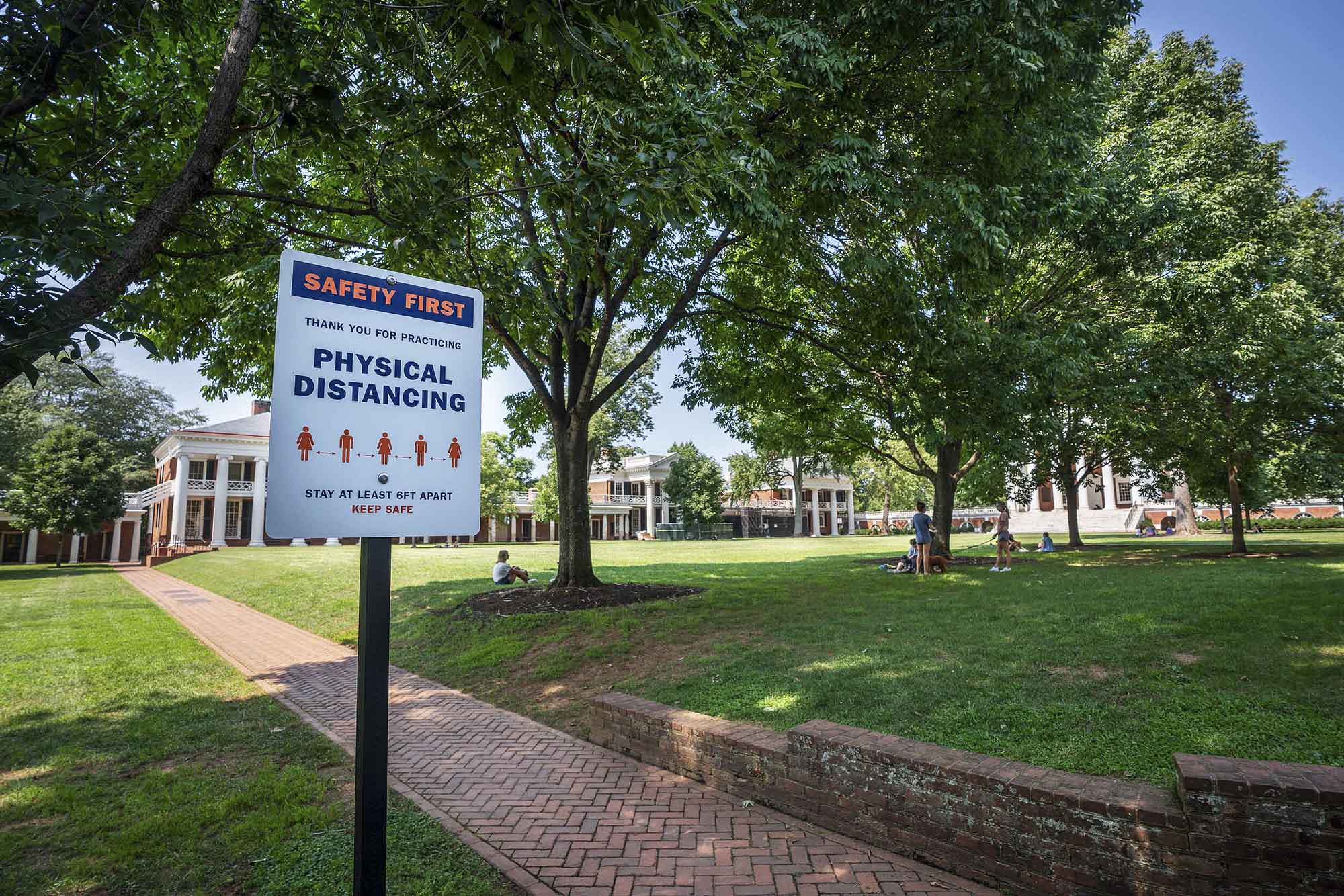Leaders managing the University of Virginia’s response to the coronavirus have approved a set of restrictions on University operations that could be implemented if additional measures become necessary to slow the spread of COVID-19.
The “Short-Term Restricted Operations” list identifies specific restrictions that could be put into place as UVA continues to navigate changing conditions to ensure the safety of the community. Moving to this status would be short-term, as its name suggests. It’s a phase that could either lead to additional restrictions if necessary, or a shift back to fewer restrictions if the short-term actions appear to be working as expected. Currently, UVA is not in this phase.
UVA Today checked in with Department of Medicine Chair Dr. Mitch Rosner and Chief Operating Officer J.J. Davis to find out more about the University’s contingency planning and what a shift to “Short-Term Restricted Operations” status could mean.
Q. What’s the purpose of identifying the potential restrictions that would be part of “Short-Term Restricted Operations”?
A. To be ready for what comes next and to stay focused on safety – that’s a simple, but accurate answer. The more complex answer is that we want to be smart about how the University conducts its mission in an ongoing pandemic as conditions change. This focuses on what short-term restricted operations would mean for students, for faculty and staff, for instruction and research, for medical care, for our facilities.

Last week, President Ryan announced three new restrictions after we became concerned about the number of positive cases, about large gatherings that occurred, and about the need for better adherence to our policies on wearing masks and physical distancing.
The Short-Term Restricted Operations plan spells out what could happen if we continue to see concerning trends in the number of positive cases, in the capacity of our quarantine and isolation space, in compliance with current restrictions, and in other metrics that we track. Our hope is that we won’t need to implement any of them, but it makes sense to prepare.
Q. What are the restrictions that could be implemented?
A. First, the restrictions are intended to decrease the number of people on Grounds and minimize opportunities for exposure by limiting in-person interaction. If we reach that point, the University will detail all of the restrictions, changes and exceptions to them to the community, and they will be posted to our Return to Grounds site.
Here are some of the possible restrictions or operating guides:
- All undergraduate instruction is moved online, with exceptions possible for courses that can only be offered in-person.
- With approval from the provost, graduate and professional instruction may be either in-person, hybrid or online. (This decision will depend in part on the viral measures that prompt the short-term restrictions.)
- Research continues, with oversight from the Vice President for Research.
- All in-person events and gatherings as defined in University Policy SEC-045 are prohibited and should be moved online.
- Academic building access is restricted to graduate students, faculty and staff.
- Libraries are limited to contactless pick-up and online services.
- Telework is mandated for as many employees as possible.
- Movement of students between off-Grounds and on-Grounds is limited.
- Dining is limited to pick-up, mobile ordering and/or grab-and-go.
- Recreational facilities are closed.
Q. What’s the threshold for putting short-term restrictions in place? Is there a number of positive cases that will put things in motion?
A. There isn’t a specific figure that triggers an action. UVA has committed to closely watching a number of metrics and indicators. Yes, the number of active cases, but also the trends showing how significant an increase might be, and how well people are following guidelines on mask-wearing and physical distancing. We evaluate our ability to manage rising cases, and monitor the capacity of our quarantine and isolation spaces. We also monitor the traffic we’re experiencing in Student Health and Wellness and in Employee Health. And we pay close attention to the guidance of our own health experts and any health guidance that is implemented at the government level.
Media Contact
Article Information
September 30, 2020
/content/qa-whats-included-uvas-virus-contingency-plans

